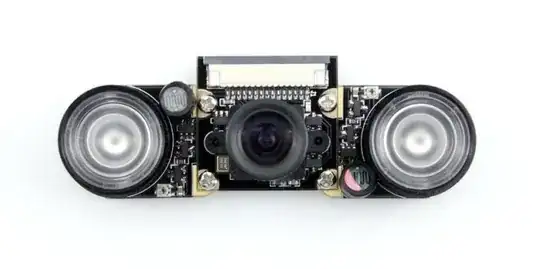I am using the Waveshare RPi Camera (F), which comes with two IR LED boards to enable nightvision (they look like two big eyes on either side of the camera 'nose' - at least that's what it looks like to me).
Both of these LEDs get very hot. Waveshare recommends installing heatsinks (which I have); however, I would also like to turn off the power supply to the Camera Serial Interface so that it is not consuming power when not in use.
Is this possible? If so how do I do it, and would this be something I could easily incorporate into a python script to switch it on again?
I have tried simply disabling the camera in config, but power still goes to the LEDs.
There are no switches on the LED boards, they simply draw power through the camera.
I am using Raspberry Pi 2 B+ running latest Raspbian. A similar question came up in my search but no answers, so I have given some more specific information in my question.
